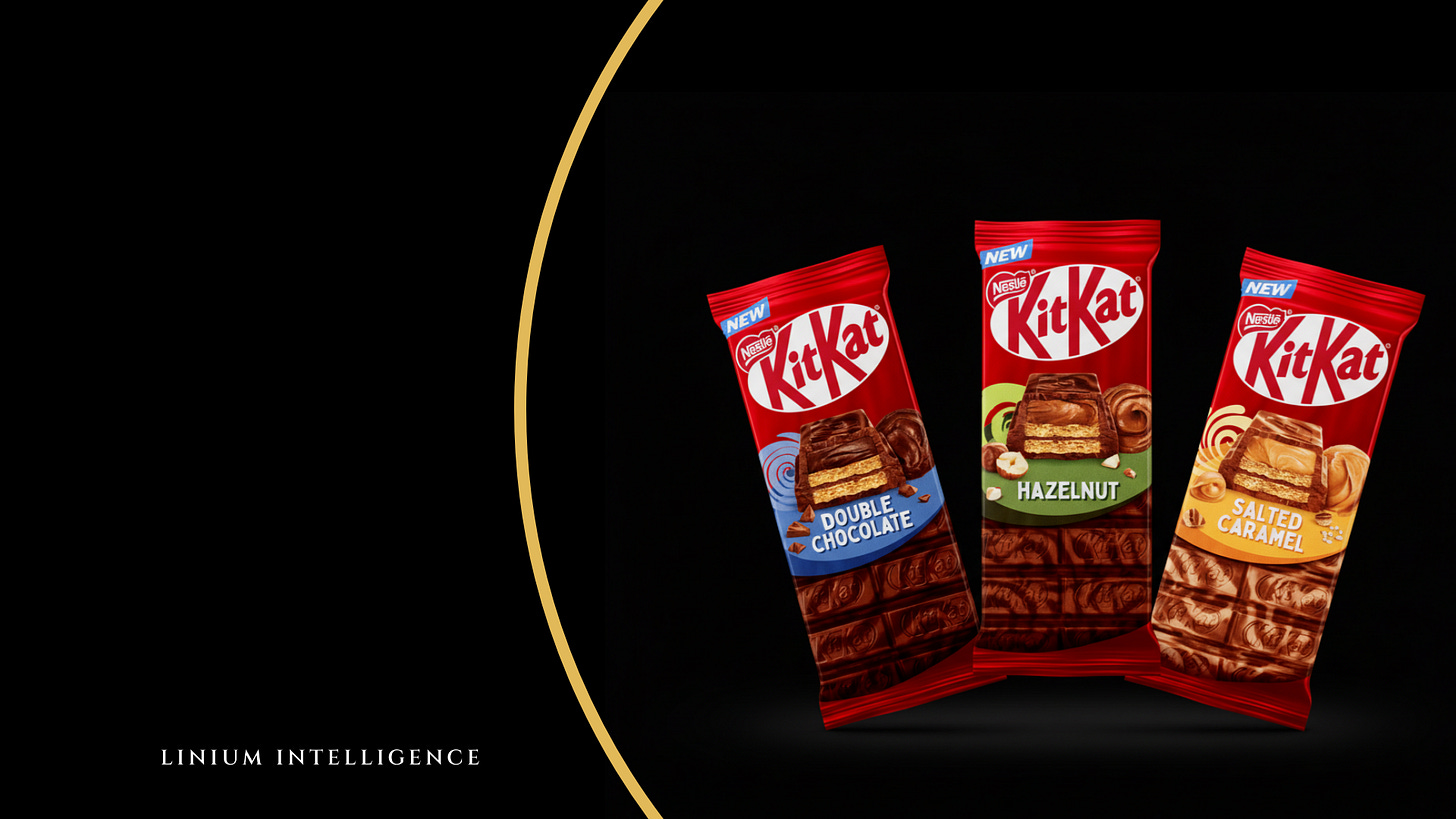KitKat Introduces Three New Chocolate Slabs In South Africa
Nestlé’s KitKat brand has expanded its South African range with the launch of three new chocolate slabs, marking a significant extension of its portfolio in the region. The new products are offered in three variants:
Double Chocolate
Hazelnut
Salted Caramel
The Double Chocolate slab promises a richer cocoa taste for those seeking an intensified chocolate experience. The Hazelnut variant combines the classic wafer with nutty creaminess, while Salted Caramel blends sweet and savory notes, a flavor profile that has gained global popularity in recent years. With this launch, KitKat aims to position the slab format as a complementary offering to its well-established wafer fingers, targeting both existing fans and consumers seeking larger-format sharing options.
This development in South Africa follows a broader pattern of product innovation across multiple international markets by KitKat in 2025. Earlier this year, KitKat rolled out a festive pineapple tart flavor across Malaysia, Singapore, and Thailand to coincide with Lunar New Year celebrations, and introduced a Pine Ame bar and Sakura variant in Japan. In Australia and New Zealand, the brand launched indulgent products such as Gooey Choc fingers and Honeycomb Smash eggs, while the United Kingdom saw new Chunky editions, gingerbread-flavored bars, and a Lemony Lime flavor for summer, which was also launched India. This parallel strategy highlights a consistent theme: global flavor experimentation alongside local tailoring. While KitKat leverages universally appealing flavors like hazelnut and salted caramel across multiple markets, it also integrates culturally specific tastes, such as pineapple tart for Lunar New Year in Asia or sakura in Japan.
Market Dynamics
KitKat’s market position and activity:
KitKat continues to reinforce its global identity as both a playful and innovative chocolate brand, blending indulgence with novelty.
KitKat’s worldwide 2025 activity shows a dual approach: introducing mainstream flavors with broad appeal (hazelnut, salted caramel, double chocolate) and launching regionally distinctive products (pineapple tart, sakura, lemony lime).
Beyond chocolate bars, KitKat has also diversified formats (dark ice cream in Malaysia, collaborations with lifestyle brands like PopMart in Singapore, and bakery tie-ins such as their “Made with KitKat” cake in Coles in Australia and New Zealand).
Cadbury’s market position and activity:
In South Africa, Cadbury has introduced limited-edition 80g slabs featuring Dairy Milk 5 Star, Crunchie, Astros, and Caramilk P.S. This mirrors KitKat’s own recent slab launches, with both brands using limited-edition variants to tap into consumer appetite for novelty within the slab category.
Globally, Cadbury has maintained its focus on extending existing lines (e.g., Milkinis, new Cadbury Bournville flavors, Dairy Milk Lotus Biscoff, iced latte variant) and introducing playful or collaborative formats such as Easter eggs and advent calendars.
The brand has also emphasized sustainability in the UK with recyclable packaging, strengthening its environmental credentials alongside product innovation.
Investments in infrastructure, such as Cadbury’s new automated distribution center in Australia, highlight a longer-term focus on supply chain resilience and efficiency.
Competitive landscape:
In South Africa, both KitKat and Cadbury are using limited editions and slab formats to stimulate consumer excitement and reinforce brand presence.
Globally, KitKat’s activity is skewed toward flavor novelty and cultural relevance, while Cadbury emphasizes portfolio extensions of its core brands and sustainability in packaging.
Both brands are visibly intensifying innovation cycles, ensuring that consumers encounter new offerings throughout the year, across multiple formats and flavor profiles.

